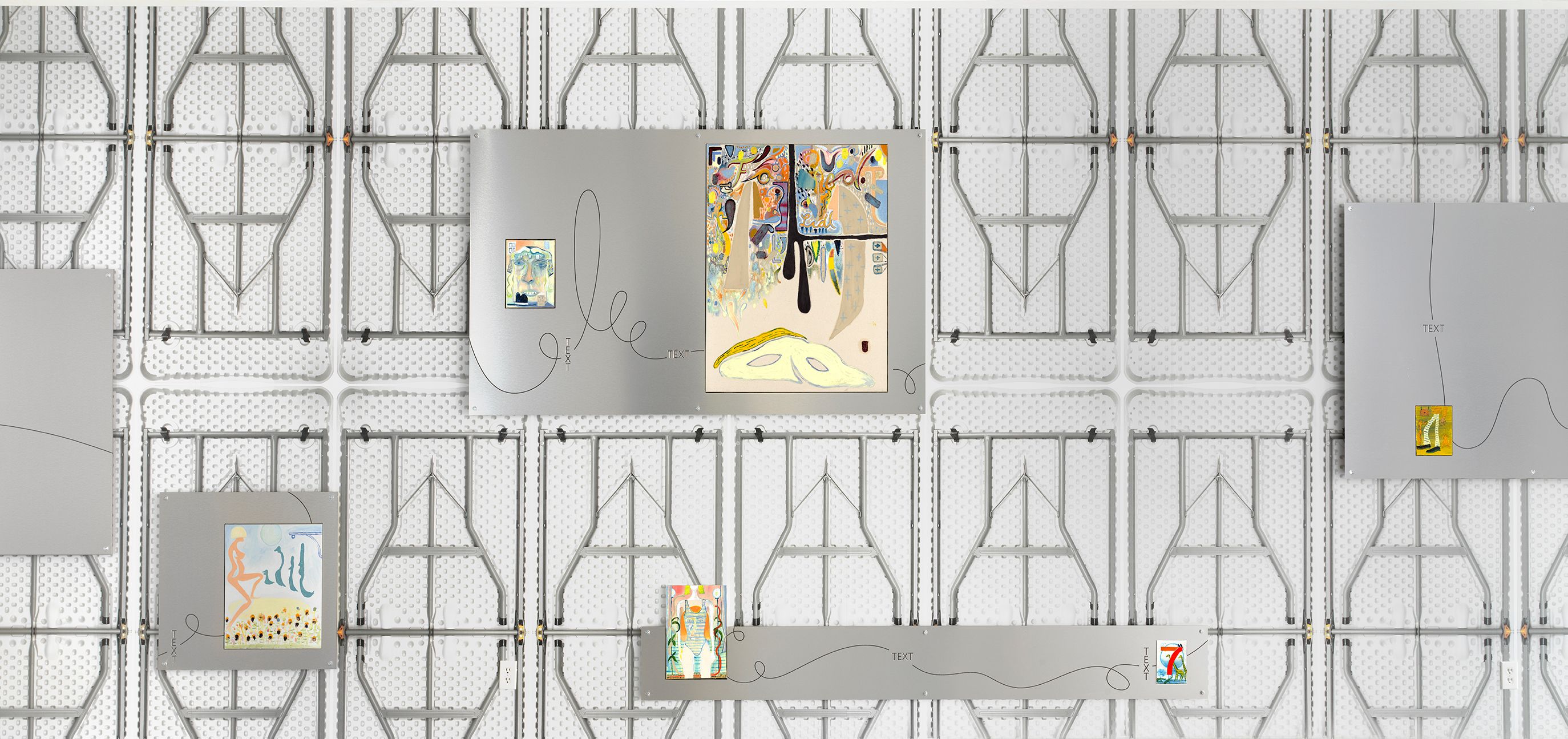It is with great pleasure that Simone Subal Gallery announces the opening of Florian Meisenberg’s “In Flames Leaving Las Vegas” on Thursday, September 13, 2018. This is Meisenberg’s third solo show at the gallery. The exhibition runs until October 28, 2018. Please join us for an opening reception on September 13 from 6 – 8 pm.
For the past several years, Florian Meisenberg’s practice has engaged the various permutations of mediums, whether the canvas of a painting or the screen of a digital device. In these complex projects, the oil that coalesced the pigment in oil paint and the code that powered the various software experiments were functionally and theoretically the same. Distinctions between the analogue and the digital were effectively elided, opening a number of considerations about how knowledge is both disseminated and received.
Meisenberg’s latest show “In Flames Leaving Las Vegas” initiates new creative grounds. If his previous projects exerted an external pressure, his latest paintings, sculptures, and videos delve deep inside the mind: contemplation and dreams, states of psychosis and moments of lucidity. Meisenberg has in the past transgressed the various permutations of mediums, now it’s the movement between the imagined and the real, the ideal and the material, the ways these diametrically opposed states imbricate the other.
“In Flames Leaving Las Vegas” is a show of amorphous irrationalities, one in which the different states continually reference one another. The larger walls of the gallery are covered in wallpaper—the printed image is familiarly allusive, and its form suggests a kind of circuitry. Placed atop of this surface is an arrangement of paintings of various sizes. The compositions are housed in large, brushed aluminum panels of varying shapes and dimensions and are distinct objects themselves. Incised on the panels is a line that rises and falls, turning back upon itself. It resembles the moment a flame is just about to burst into something larger. A sense of movement and an unfolding landscape is also apparent; the gesture evokes physical and narrative associations. Its flow is punctuated by either the paintings, which are flush with the frames’ surface, or the engraved word “text,” which is a placeholder for thoughts, especially those of the viewer. The paintings reflect Meisenberg’s effort to embrace and follow intuitive impulses. They represent inner states: the various conflations of thoughts, the often unsettled and contradictory life of dreams. The depictions are gestural and filled with signifying chains and allusions. Certain figures and motifs appear several times like in a recurring dream or a state of compulsive thinking. What cannot be missed is the tremendous energy each composition possesses.
The multivalent narrative evoked in the arrangement of paintings and forms is given an added degree of complexity from the two sculptures at adjacent ends of the space. Both pieces feature a sheet of Plexiglas fashioned into the shape of cat—it’s bodily image printed onto the surface. They rest a top a plinth that conjures thoughts of geologic stratification submerged in a viscous liquid. These island-like structures are like diving boards into another mental territory. The cat’s faces have been left blank, and filling the void is a projection of Nicholas Cage’s visage, which has been animated digitally to transform a found dialogue into an unsettling, murmured soliloquy. Viewers can listen to the conversation on wireless headphones, moving about the space in their own time. The disquieting sense one gets upon experiencing the films infuses the paintings and their own internal juxtapositions with an ever more nuanced understanding of how the boundaries between the mind and the world is porous and arbitrary.






























































































































